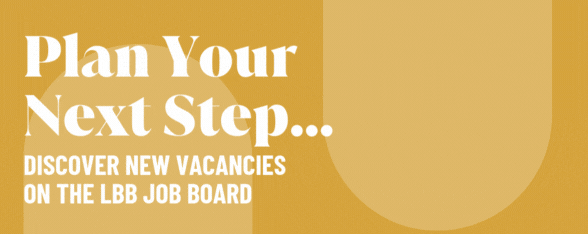
The VFX Factor: Nick Venn on the Changing State of the Industry

Nick Venn started as a sound engineer. After studying audio production and music business, his journey in production commenced with a general interest in post. His advertising production career began at audio and post production houses, as well as agencies, and now he holds a leadership role in post and VFX at AIRBAG.
He has worked on a number of significant campaigns during that time, including award-winning experiential projects such as 'Meet Graham' for TAC, 'Made Possible by Melbourne’ for the University of Melbourne, and ‘City of Possibilities’ for Singapore Tourism. He also runs a busy AIRBAG VFX Dept alongside Rob Ride and Travis Hogg.
LBB> There are two ends to the VFX spectrum – the invisible post and the big, glossy 'VFX heavy' shots. What are the challenges that come with each of those?Nick> The invisible post can be very tricky because it needs to look photo real and not draw attention to itself. By its nature, it must be invisible and is often the paint-out or set extension work that happens in the last stages of the process. So it’s often done quickly and under a lot of scrutiny.
The glossy VFX-heavy shots are the most fun to work on and require a lot of planning and are obviously the most labour intensive. The most challenging part of those is that we can put literally anything on the screen. And with imaginations running wild, there's always an infinite list of possibilities to explore, which takes up a lot of time.
LBB> As a VFX person, what should directors be aware of to make sure you do the best possible job for them?
Nick> Involving the VFX Supervisor at the storyboarding stage makes a huge difference to the approach the production takes. It often means that we can use pre-visualisation alongside boards to plan out camera moves and shot lengths, as well as CG asset design and even animation. It’s a vital tool for the director, the camera department and even the agency to understand what they’re getting, before the shoot even begins.
LBB> VFX is a true craft in the classic sense of the word. Where did you learn your craft?
Nick> My background in visual effects came from all over the place but I’m a producer so my craft is spreadsheets and communication. Since I’ve been working at AIRBAG I’ve learnt a lot about the process of high-end visual effects and we’ve done some amazing work which I’m very proud of. The learning process is ongoing and we’re always doing new things which require new thinking.
LBB> Think about the very, very start of a project. What is your process for that? Do you have a similar starting point for all projects?
Nick> The very start of a project is always a discussion with the director, the EP, line producer and the agency to nut out the creative approach. We want to know what the vision is so we can plan the approach to getting it on screen. It means a lot of note-taking and then some rough shot layouts to list the practical vs VFX elements in each scene. From there, it’s about planning time and resources to realise the vision from that first discussion.
LBB> We imagine that one of the trickiest things with VFX is, time issues aside, deciding when a project is finished! How do you navigate that?
Nick> In the commercial world, that deadline is almost always decided by the media schedule and on-air date. It’s always a challenge to get the work done in time as those deadlines are rarely a meander through the post schedule – it’s always a sprint, never a marathon! The hardest part is limiting the amount of creative feedback and ‘tinkering’ and then allowing time to finesse the imagery for delivery.
LBB> Is there a piece of technology or software that's particularly exciting you in VFX? Why?
Nick> Two things that are pushing the VFX envelope lately and are intertwined to some degree. The virtual production tech; using LED volumes to replace green screen compositing and making simulated travel shoots far easier, for example.
Also, Unreal Engine 5 - a game engine, real-time rendering software which is now powerful enough to render photo-real CGI and create “virtual sets” for the above LED panels. Using these two in conjunction has changed the game for production. It’s not without its foibles and does require a lot of pre-production but it’s been exciting to see it evolve over the past few years.
LBB> Speaking of that, how have you navigated your role during Covid? Was there a big shift to remote? Tell us about your experience.
Nick> We already had a bit of infrastructure in place before 2020 but put it more firmly to work when we all had to work from home for a couple of years. It means that our whole team can work from home as if they’re in the studio and we can hire VFX artists from anywhere in the world and they can integrate straight into our VFX pipeline and render their work locally. That’s been the biggest change, along with using streaming platforms to share our work in real-time with clients. We still use all of these tools and it means our teams can be flexible in their working environment and hours.
LBB> Are there any lessons you've learned / experiences that you've had from working during Covid that you'll be looking to keep with you once things hopefully get back to some form of normality?
Nick> I think the ability to look further out in the world for specialist artists and have them work “locally” in our VFX pipeline has been very valuable and we’ll continue to do that. And giving people the ability to work from home and manage their time a bit better, rather than commuting everyday has been a great bonus from the pandemic. In saying all of that, I feel like it’s always best to work as locally as possible and working in person and presenting to clients together in a room has always felt more productive and rewarding than over Zoom.
LBB>How did you first get into the industry? What was your very first job in the industry and what were the biggest lessons that you learned at that time?
I trained and worked as a sound engineer for a very short time at the beginning of my production career. That led to a longer stint as an agency producer and then back to post-production and, ultimately production and visual effects. I think the biggest lesson I’ve learnt is to never name a file or a folder “Final.”
LBB>What was your first creative milestone in the industry – the project you worked on that you were super proud of?
Nick> There are a heap of jobs that I’m proud of and it’s an ever evolving list as we do new stuff all the time. I think the one job that got a lot of attention was the AR aspect of the Meet Graham TAC project with Clemenger Melbourne a few years back. It was a very technically challenging project for which we pushed a few boundaries and it was very rewarding.
LBB> From a VFX perspective, which ads have you seen recently that you've been particularly fond of and why?
Nick> Some of the more recent TVCs we’ve done with Ariel Martin which required some very technical shooting and visual effects with challenging timelines come to mind – The NBN and Ampol projects, as well as the design and VFX elements of Christopher Hill’s recent ‘Xero’ campaign.
Looking outside of AIRBAG I really like the Amazon Books TVC - The Reading Feeling Awaits. It's a great mixture of animation styles and a perfect use of visual effects to integrate those elements into the real-world. A HUGE VFX project and it’s just great fun.












